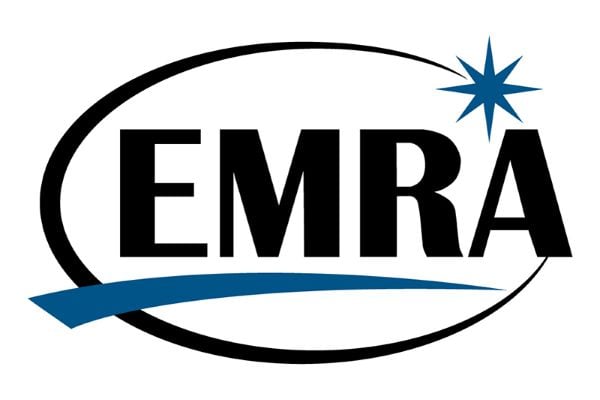When the Frontlines Meet the Fallout: Vaccine Hesitancy, Policy Shifts, and the ER Burden
Alexander Luke Alley, MSc, OMS4
Kentucky College of Osteopathic Medicine
EMRA MSC Midwest Coordinator
Peyton Lehman, MS3
University of Minnesota Medical School
EMRA MSC Great Plains Regional Representative
In recent years, the Emergency Department (ED), once a haven for high-stakes trauma and acute illness, has increasingly become a safety net for a different kind of public health emergency: the resurgence of vaccine-preventable diseases. The perfect storm of federal policy shifts, pandemic-era disruptions in preventive care, and rampant vaccine misinformation has created a dangerous environment for vulnerable patients, and a growing challenge for emergency physicians and ED resources.
The Trump Administration has made several changes to the Advisory Committee on Immunization Practices (ACIP), including the appointment of individuals with a track record of vaccine skepticism, the promotion of “health freedom” ideologies, and the removal of all advisory agencies from ACIP meetings. This has helped to legitimize fringe perspectives and further weaken public confidence in routine immunization programs and public health experts. These changes were coupled with a broader federal stance that often-downplayed public health messaging, leading to organizations such as the American Academy of Pediatrics creating their own vaccine schedule, which contrasts with the CDC and ACIP’s recommendations.
The downstream effects have been devastating, routine childhood vaccination rates have plummeted. According to a CDC analysis across 10 U.S. jurisdictions, there was a decline of 13.1 million doses in vaccine administration between March and September 2020 compared to pre-pandemic levels, with this decline continuing into 2024 (Murthy et al., 2021; Dong et al., 2025). As a result, measles, which was once declared eliminated in the United States in 2000, has made a return. As of May 14, 2025, 1,001 confirmed measles cases have been reported by 31 jurisdictions (the most cases reported in the U.S. in a single year in >3 decades, except for 2019), with most occurring in unvaccinated children (Dong et al., 2025). ED physicians are again seeing Koplik spots, descending rashes, and febrile children with severe respiratory symptoms, hallmarks of a disease many younger clinicians have never encountered firsthand.
This resurgence is not merely a fluke; it reflects declining community immunization levels and an increasingly emboldened movement of vaccine hesitance and mis/disinformation. In several of the recent outbreaks, most cases were among unvaccinated children, many of whom were exempt from school immunization requirements due to religious or philosophical waivers. Even more alarming is that measles can mimic more benign viral syndromes in early stages, leading to missed diagnoses, nosocomial spread, and delayed isolation. In the ED setting, this creates logistical and ethical challenges, especially when immunocompromised or unvaccinated infants are also in waiting rooms.
Emergency physicians are seeing the consequences at the bedside. Diseases once relegated to exam questions (measles, pertussis, and even mumps) are again presenting in the ED. As Dreisinger and Lim (2019) note, pediatric emergency clinicians are being forced to identify and treat illnesses they may have never seen in practice, under time pressure and with incomplete vaccination records. The risk of missed diagnoses is not theoretical; it is a reality that undermines patient safety. Moreover, this resurgence brings ethical tension. How do we triage and treat children whose preventable illness places others at risk? Do we expend limited resources on diseases that should have been eradicated in our community? What do we do when misinformation turns parents against lifesaving care?
For EM providers already stretched thin, this is not just an operational burden; it is an emotional one. Burnout is exacerbated when clinicians are forced to manage avoidable illness, especially in the context of vaccine refusals and confrontational caregivers. O’Leary et al. (2024) emphasize that clinicians often feel ill-equipped and unsupported in these discussions, despite being on the frontlines of vaccine communication. They underscore the need for improved tools, consistent messaging, and institutional support when addressing hesitancy, especially in high-stress and fast-paced environments like the ED.
When misinformation leads to suffering, it becomes a source of moral injury: the sense that one's values as a healer are being undermined. Providers are witnessing children harmed by choices rooted in fear, dis- and misinformation, or politicized science. Romer et al. (2022) found a direct link between exposure to vaccine misinformation and reduced COVID-19 vaccine uptake in both adults and children, highlighting just how pervasive and damaging these narratives have become in our communities.
What the House of Emergency Medicine Can Do
As the specialty that never turns patients away, Emergency Medicine has a unique and critical role to play in this crisis. We can:
- Advocate for public health-informed policies and speak out against harmful rhetoric that undermines vaccination programs.
- Educate ourselves and our teams on the signs of re-emerging diseases.
- Empower our patients and caregivers with evidence-based information, leveraging trust in the ED setting to combat misinformation.
- Protect our teams through institutional support, wellness resources, and systems that recognize the cumulative toll of this crisis on clinical morale.
Hesitancy and misinformation are not new, but this “vaccine-hesitant moment,” as Larson et al. (2022) describes, is unprecedented in its reach and consequences. The ED has become a frontline not just for trauma or sepsis, but for the consequences of systemic public health failure. And yet, in the chaos, emergency physicians continue to adapt, treat, and lead. In this fight, knowledge is our shield, compassion is our tool, and advocacy is our duty.
References
- O'Leary ST, Opel DJ, Cataldi JR, Hackell JM. Strategies for Improving Vaccine Communication and Uptake. Pediatrics. 2024; e2023065483. doi:10.1542/peds.2023-065483
- Dreisinger N, Lim CA. Resurgence of Vaccine-Preventable Disease: Ethics in the Pediatric Emergency Department. Pediatric Emergency Care. 2019;35(9):651-653. doi:10.1097/PEC.0000000000001917
- Patel Murthy B, Zell E, Kirtland K, et al. Impact of the COVID-19 Pandemic on Administration of Selected Routine Childhood and Adolescent Vaccinations — 10 U.S. Jurisdictions, March–September 2020. MMWR Morb Mortal Wkly Rep. 2021;70(23):840–845. doi:10.15585/mmwr.mm7023a2
- Romer D, Winneg KM, Jamieson PE, Brensinger C, Jamieson KH. Misinformation About Vaccine Safety and Uptake of COVID-19 Vaccines Among Adults and 5–11-Year-Olds in the United States. Vaccine. 2022;40(45):6463–6470. doi:10.1016/j.vaccine.2022.09.046
- Larson HJ, Gakidou E, Murray CJL. The Vaccine-Hesitant Moment. N Engl J Med. 2022;387(1):58–65. doi:10.1056/NEJMra2106441
- Dong E, Saiyed S, Nearchou A, Okura Y, Gardner LM. Trends in County-Level MMR Vaccination Coverage in Children in the United States. JAMA. 2025;334(8):730–732. doi:10.1001/jama.2025.8952
Related Content

Aug 25, 2017
Your Home
The Emergency Medicine Residents' Association EMRA is the voice of emergency medicine physicians-in-training and the future of our specialty and the largest and oldest independent resident organization in the world. EMRA was founded in 1974 and today has a membership over 18,000 residents, medical students, and alumni.






